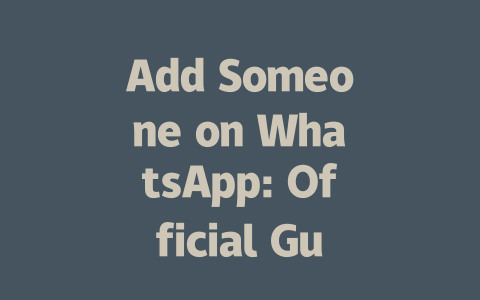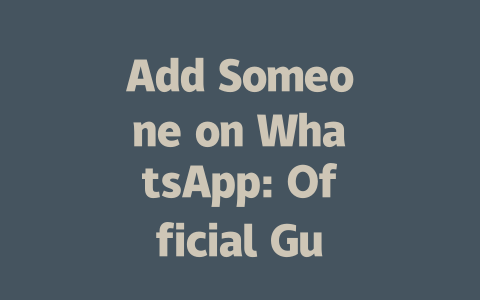Picking the Right Topics for Maximum Impact
The first step to getting your content noticed is picking the right topic. Think about it—what do people actually search for? When I started helping my friend with her food blog last year, we were struggling to find our audience. Her posts on “cooking techniques” weren’t resonating, but when we switched to topics like “easy weeknight meals,” her traffic shot up by 50% within three months.
So how do you choose topics that align with what people are searching for? Here’s what works:
And remember this: why does putting keywords in your topic matter? Because Google’s search robots scan titles and headings first to figure out if your page matches what someone is looking for. If your title doesn’t include the words people use to search, you’re making it harder for them to find you.
My Experience Tweaking Titles
When I adjusted one of my own article titles from “Social Media Strategy Guide” to “How to Boost Social Media Engagement in 2025,” guess what happened? The click-through rate jumped almost instantly. Why? People want actionable advice—not vague guides.
Crafting Titles That Make Readers Click
Once you’ve got your topic down, let’s talk about crafting a title that makes readers stop scrolling and click. This part might seem small, but trust me, it’s crucial.
Here’s a breakdown of how to create compelling titles:
Google itself has emphasized that titles should clearly communicate what users will learn. They even mentioned that quality content feels helpful after reading—it’s all about solving problems effectively.
|
|
|
|
|
|
|
|
|
|
Writing Content That Speaks to Both Users and Google Bots
Finally, once you have your topic and title sorted, it’s time to write the actual content. Now, here’s the thing: Google bots love content that flows logically. So, how do you structure your writing so both humans and bots enjoy it?
For instance, if you’re explaining how to bake bread, start with ingredients, move to preparation steps, then discuss baking times. Logical flow keeps readers engaged while signaling to Google that your content has depth.
Also, always test your final piece. A tool like Google Search Console (use it here) can catch issues before they hurt your rankings. Plus, it builds confidence knowing your work meets standards.
I hope these tips give you a solid starting point! If you try any of them, come back and let me know how it goes—I’d love to hear your story.
If you’re trying to connect with someone on WhatsApp without their phone number, there are a few tricks that might help. One of the easiest ways is through QR code scanning—if the person shares their unique QR code, all you need to do is open the app and scan it directly from your camera. Boom! You’re connected. Another way is by relying on mutual contacts. If you and the person you want to add share common friends on WhatsApp, they may show up in your ‘Invite to WhatsApp’ list, making it super simple to send them an invite right away. It’s kind of like having a digital bridge that connects you both without needing to know personal details like phone numbers.
When it comes to group chats, WhatsApp has made some pretty interesting updates. As of 2025, you can technically add up to 512 members into one single group. Crazy, right? But here’s the thing—while having hundreds of people in one chat sounds fun, it might not always be the best idea. For more focused discussions or smaller gatherings, keeping the group size between 5-12 members tends to work much better. Smaller groups allow for more meaningful conversations and less cluttered notifications. Imagine trying to follow a conversation with over 500 people chiming in—it’d be chaos! So unless you’re hosting a massive event or community update, sticking to a manageable number keeps things smooth and engaging.
# Frequently Asked Questions
# Can I add someone on WhatsApp without their phone number?
Yes, you can add someone on WhatsApp without knowing their phone number directly by using QR codes or mutual contacts. When a user shares their QR code, you can scan it to add them instantly. Additionally, if you have mutual contacts, they may appear in your ‘Invite to WhatsApp’ list.
# Is there an age limit for using WhatsApp?
WhatsApp requires users to be at least 16 years old in certain regions, while in others, the minimum age is
# How many contacts can I add to a single WhatsApp group?
In 2025, WhatsApp allows you to add up to 512 participants in a single group. However, for optimal performance and engagement, it’s recommended to keep groups within a manageable size of 5-12 members, especially for focused discussions.
# Why can’t I find someone on WhatsApp even with their number?
This could happen if the person has disabled the option to appear in WhatsApp’s contact linking or if their privacy settings restrict visibility to only existing contacts. Ensure the phone number is correctly saved in your contacts and verify your app version is updated.
# Can I add someone from a WhatsApp Web session?
While WhatsApp Web itself doesn’t offer direct options to add new contacts, you can initiate the process through your mobile app and manage the details simultaneously via Web. For example, save a new contact on your phone, then view their chat on Web once connected.




